A Southeast Asian journey while uni is out. Part Eight: Elephants
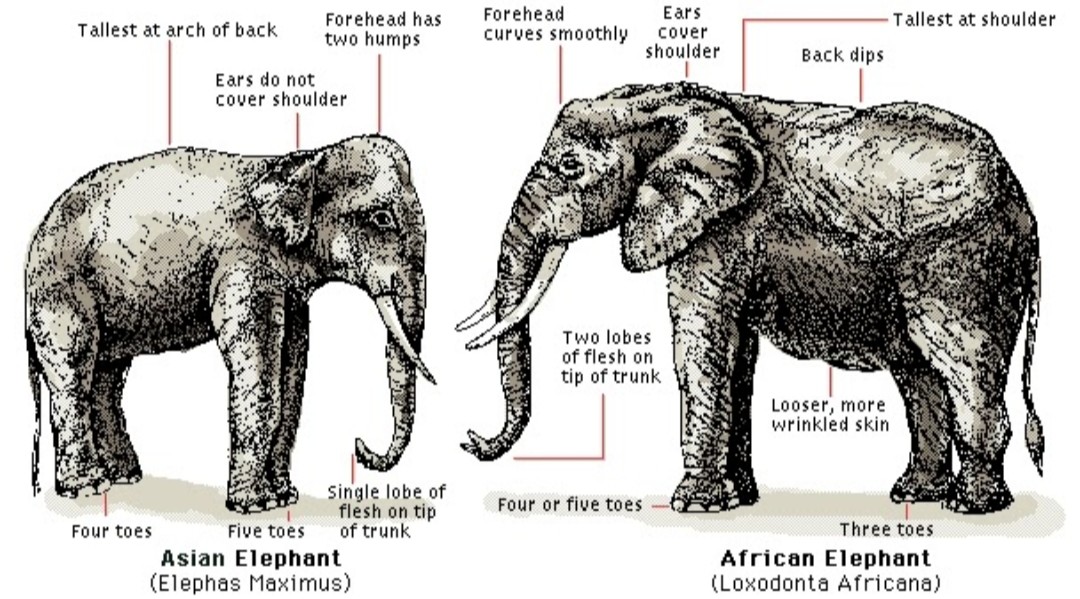
Source: www.gardenofeden.blogspot.com
For hundreds of the years the Asian elephant has been used as a labour assistant, in dragging forest logs, in clearing forest paths and as transport. Mahouts (or elephant handlers) often formed lifelong bonds with their elephants. They fed, housed and bred their elephants well, very rarely capturing wild calves after the late forties. The working elephants were allocated forest roaming time to browse and this allowed them to access the nutrients and the minerals only they knew they needed. Nutrients, minerals and medicinal plants or barks that they sought out where and when they needed them. In those yesteryears the SE Asian lived in a world where tourism was not a thing, where the only visitors were explorers, those curiously brave about life around them.
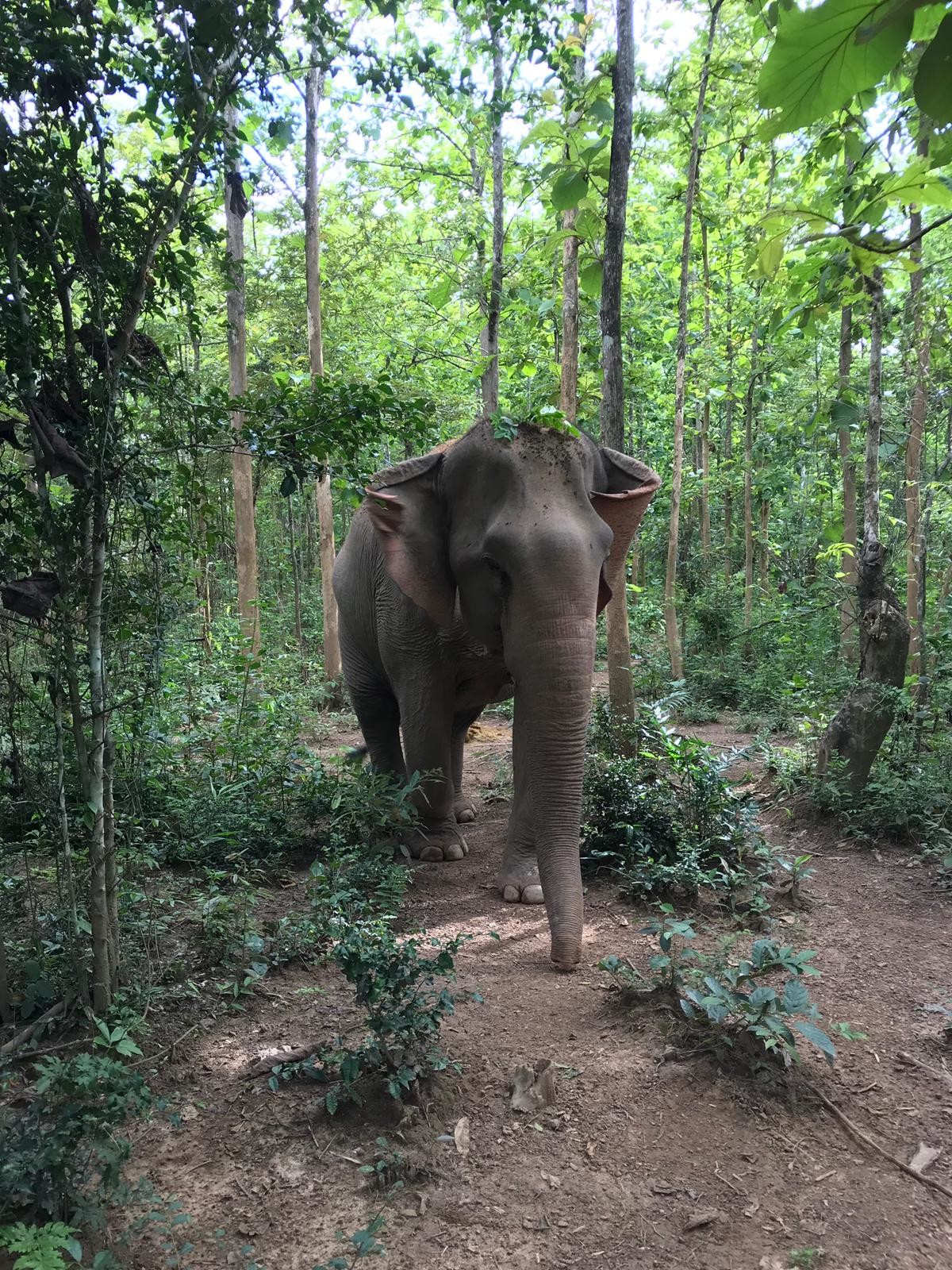
Then came cheap flights, mass tourism and the backpacking explosion. Couple this with visitor ignorance and host country greed and the plight of the elephant began. Hundreds upon hundreds of westerners booked package holidays or took pride in being backpackers who traveled not toured. No matter who they were, the romantic idea of riding an elephant drew them like bees to the honeypot. As the numbers of tourists grew, so the establishments that kept elephants for entertainment grew too. More elephants. More walks. The tourist didn't really know what 'he' wanted but the SE Asian decided that 'he' probably wanted to see elephants who could dance, balance, sit on stools, paint, or more. Performing elephants needed training and training needed hooks and punishment and ever more numbers of elephants.
The era of social media and selfies meant that those who partook of performing elephants could tell those who had never considered such a thing, all about it. They became advertisers of wildlife performances made possible only by cruelty. Riding elephants had to take tourist after tourist on circuit after circuit, day in day out.
The constant tourist work meant these elephants could not eat the quantities and varieties of food necessary for their health. Babies were, and still are, attached to their mothers on those never ending tourist walks, and at times collapse with exhaustion. But the selfie wins out and one ignorant tourist after another, broadcasts to more ignorants to join the cruelty parade.
In recent years we have seen and heard more and more in the news of charities striving to buy, steal or force these animals out of these horrific performance conditions and into sancuaries where they can live out their lives in conditions not ruled by cruelty, greed and ignorance. In reality, some of these sanctuaries have been in existence for a decade or more, founded by kind souls who predicted cruel trends and tried to divert disaster, but only now are we beginning to hear about them on a daily basis.

Source: https://mandalaotours.com/
We had already visited Free the Bears and seen the amazing work they do and now the students chose to visit Manda Lao elephant sanctuary, one that took a firm stance against elephant riding. Manda Lao charged $10 more than the other elephant sanctuaries in and around Luang Prabang, our experience was a thousand times more wonderful than any money.
Manda Lao is home to just ten rehomed elephants and began operation in only 2017. The elephants spend their time swimming, browsing, sleeping and eating. Once a day for two hours only, a single human group can come and spend time learning about, walking with and supplement feeding the elephants.
Set into the hills a 30 minute journey from Luang Prabang, the un-assuming front gate does not prepare you for the beautiful network of open sided, open plan buildings within, each connected by little humpback bridges over water lily covered fishponds and surrounded by lush tropical gardens.

The three legged, happy and healthy dog greeted us each individually as we sat beneath cool fans, with glasses of cold water, to hear from the two guides the history of, the running of and the predicted future of Manda Lao. The students asked a thousand questions and their undilutable excitement really built when the stylish boots and hats were handed out.
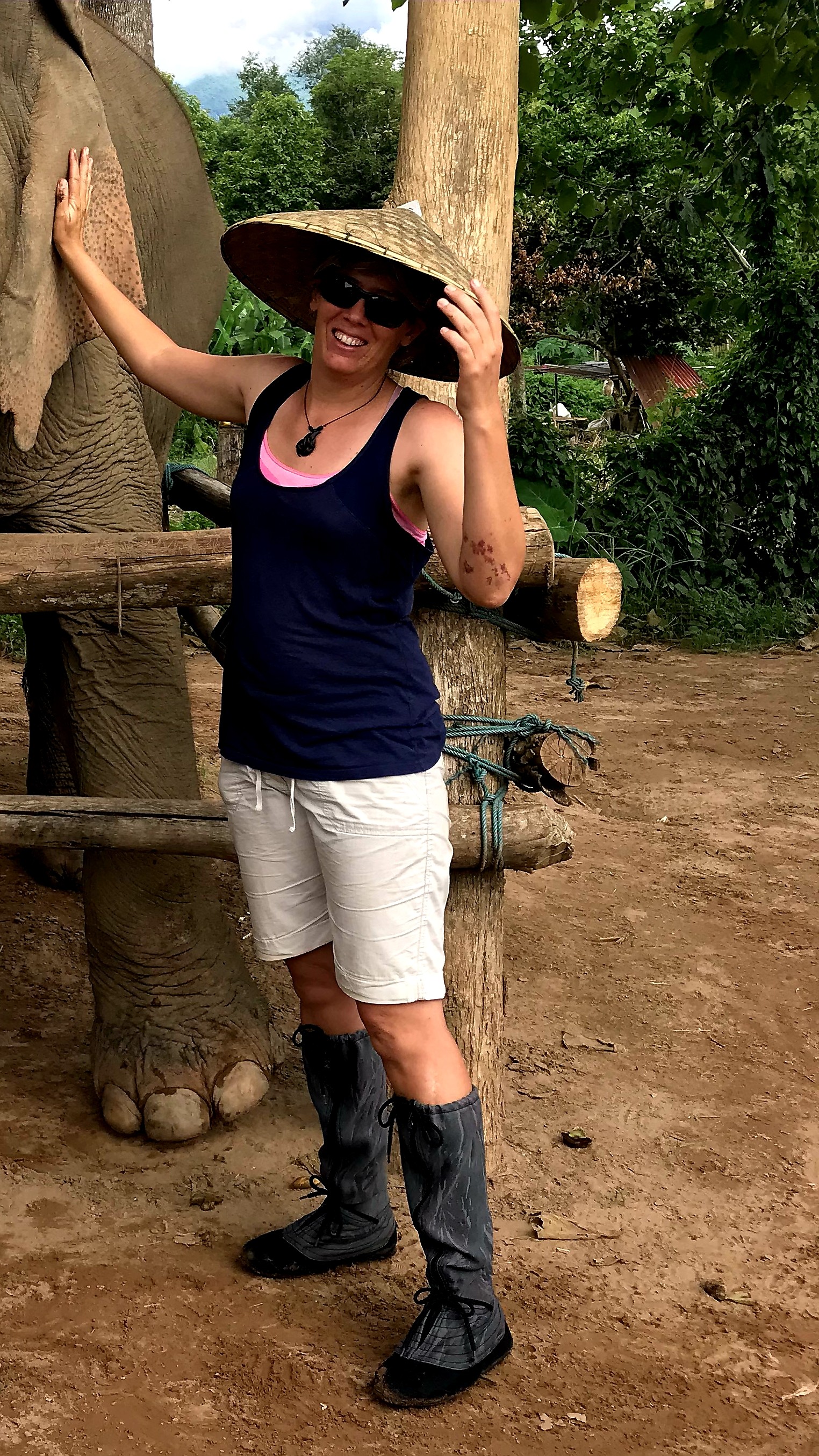
Dressed and educated now for our elephant encounter, we headed down to the river where a long motor boat dashed us to the other side where a few elephant were tucking into bamboo fronds.

As a result of not being overworked and underfed these elephants seemed to relish human interaction and as soon as they saw us they excitedly ambled over, but the guides skipped lightly into their paths and grunting and pushing, they at least made the elephants stand one side of a wooden barrier while we stood the other.
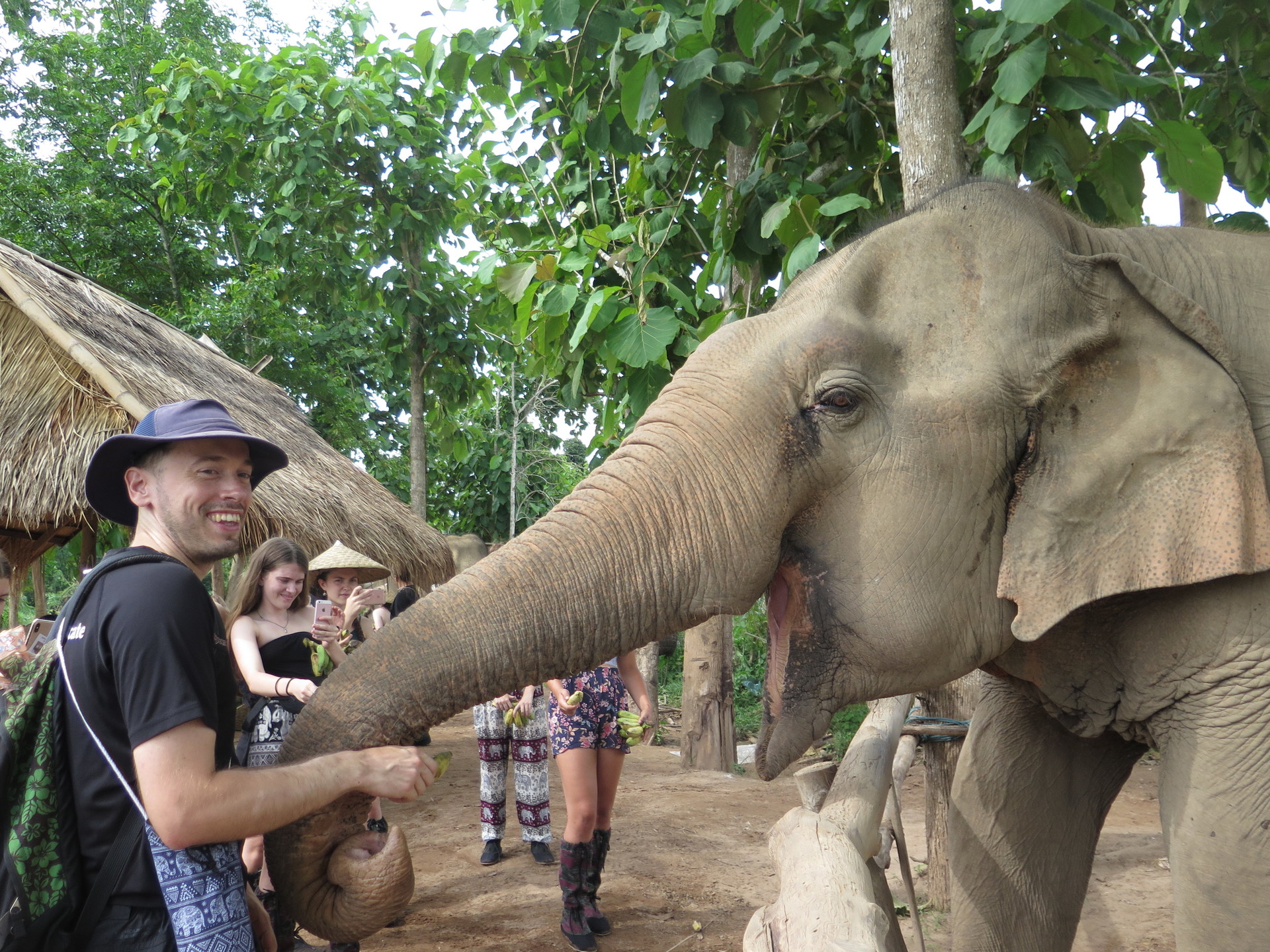
An enormous basket filled with bunches of finger bananas appeared and our guide showed us how to place the bunches into probing elephant trunks. Our students were high off the interactions and the elephants allowed hugs between bananas and photos between bananas.
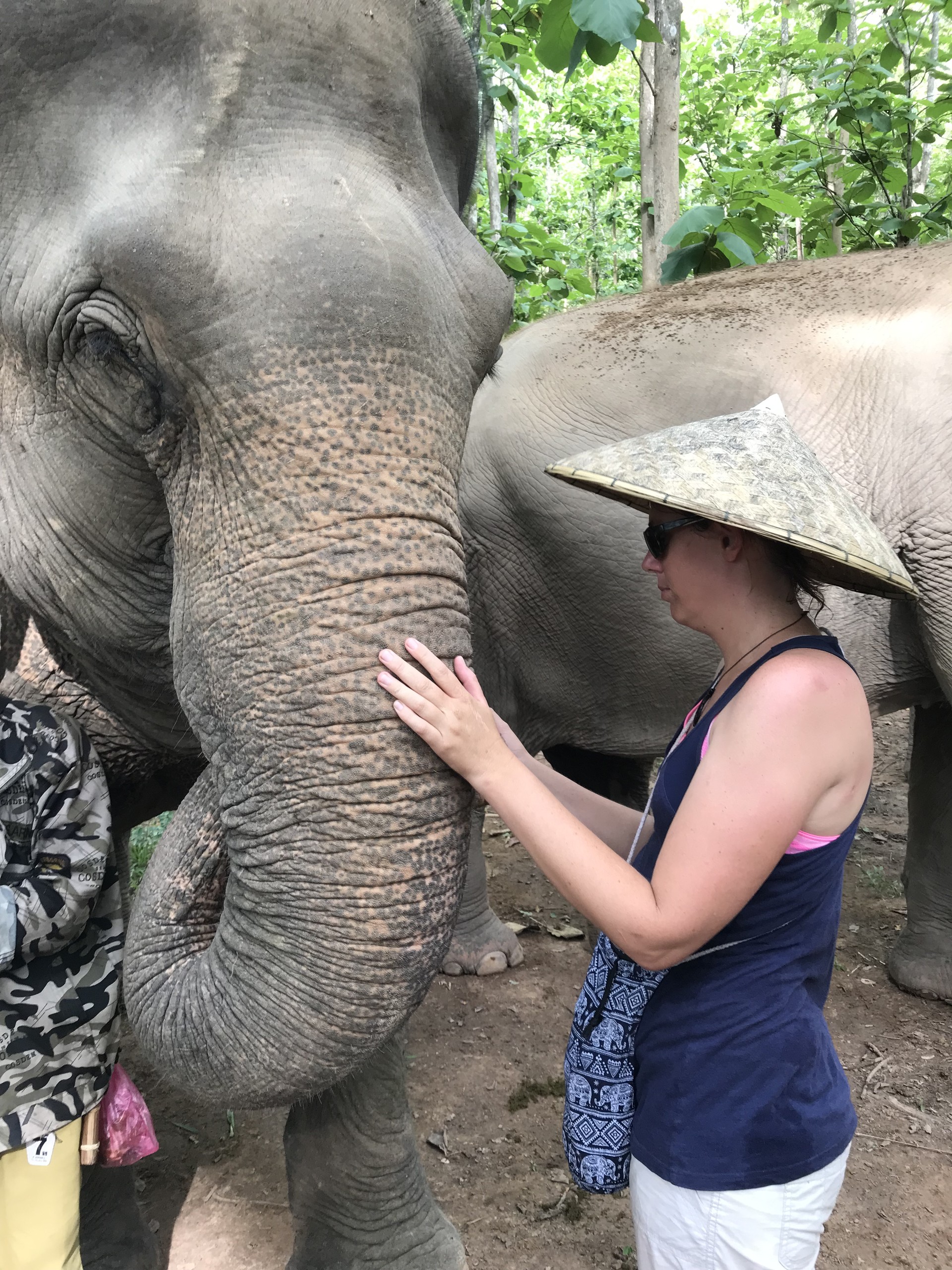
With the bananas gone, three of the four elephants headed to the river for a dip to fend off the roaring sun. The fourth seemed far too happy amongst the students and hung around, posing for many a photographic memory.

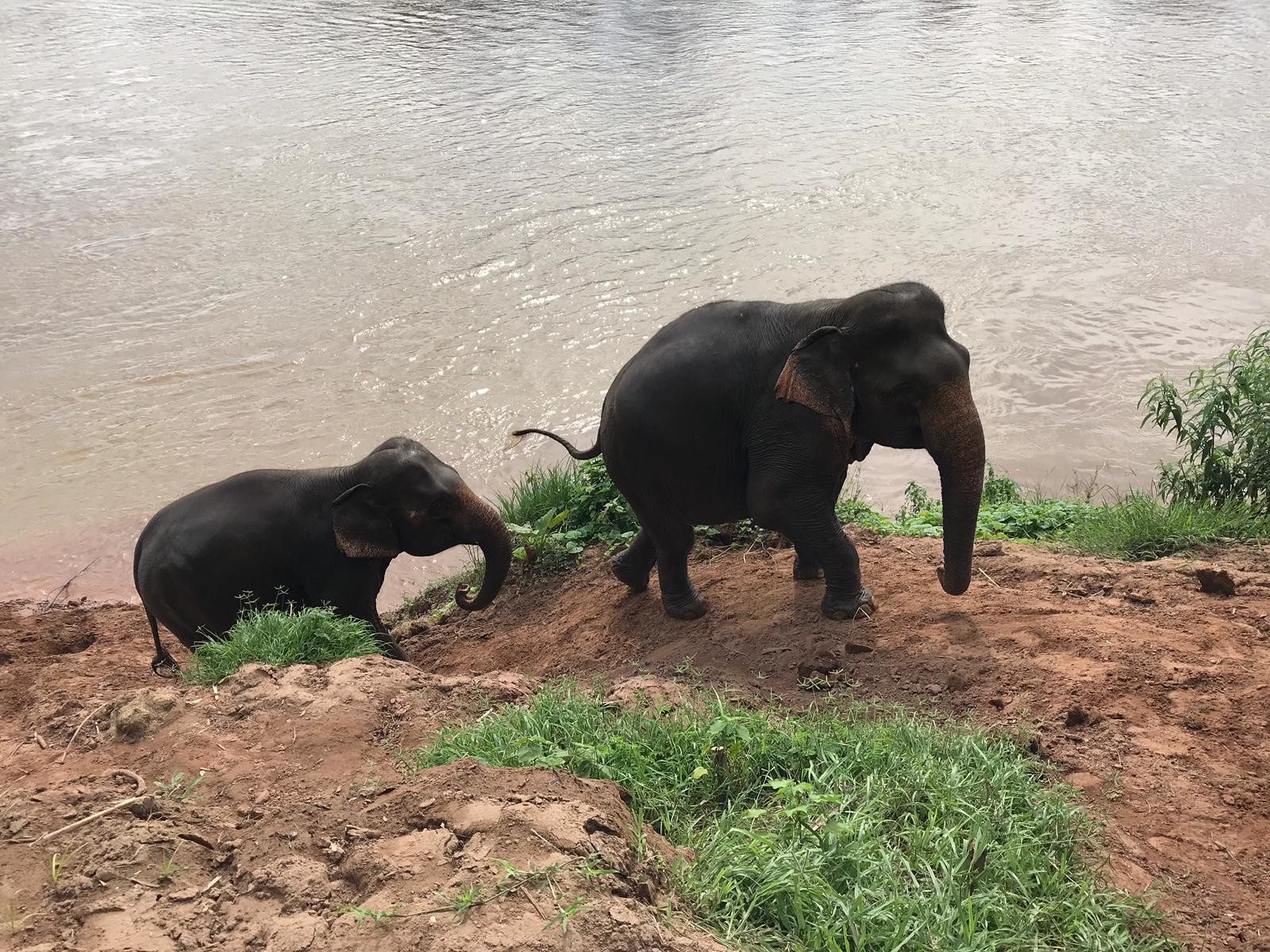
The final hour was spent learning more about the elephants as they browsed and dug up roots in a small patch of forest. We wandered among the browsing elephants, watching them feed and belly rumble in a very natural manner.
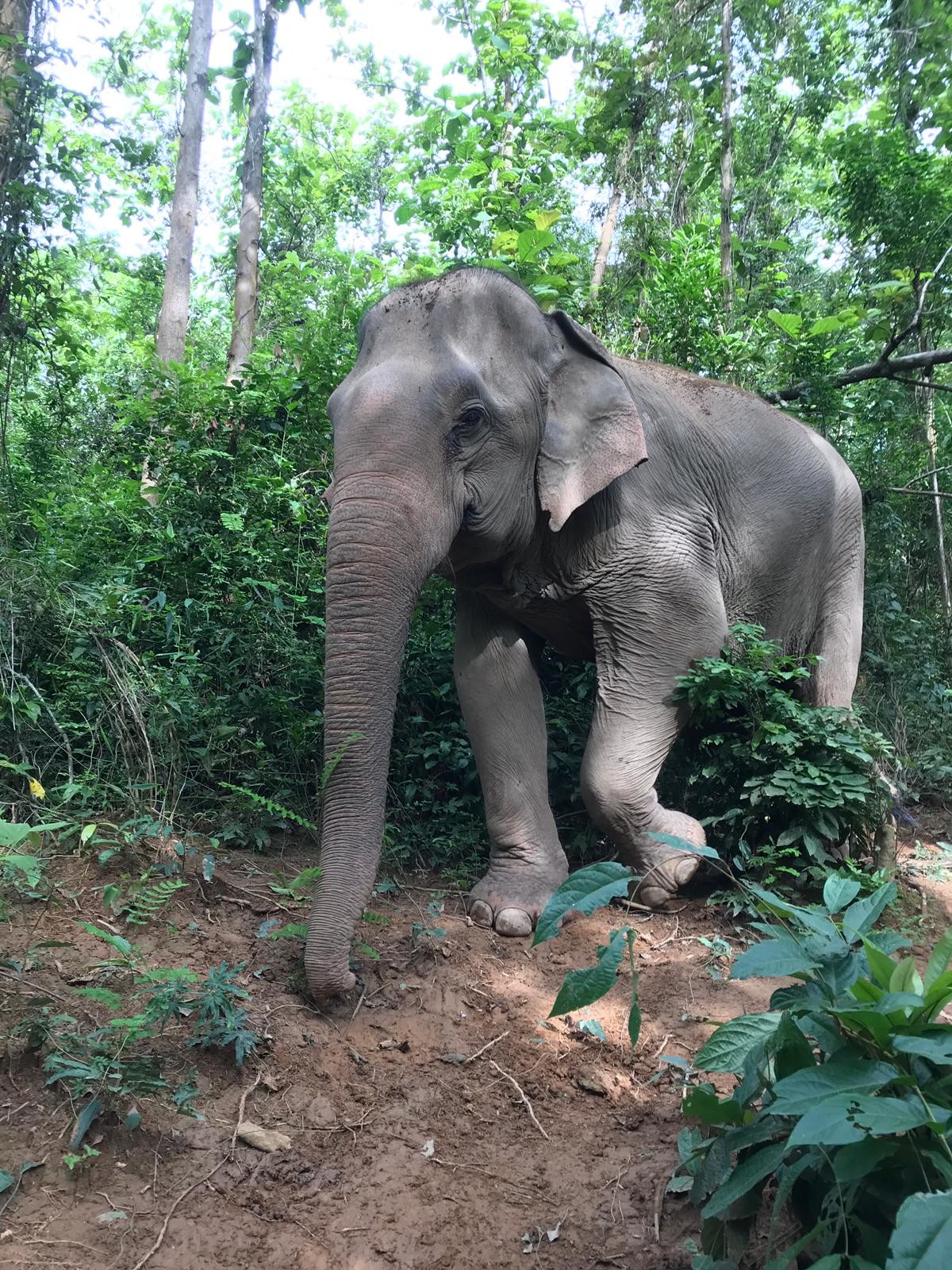
All too soon our interaction was over and the elephants were led up into the hills where there was more variety of browse. We crossed back over the river with our memories.
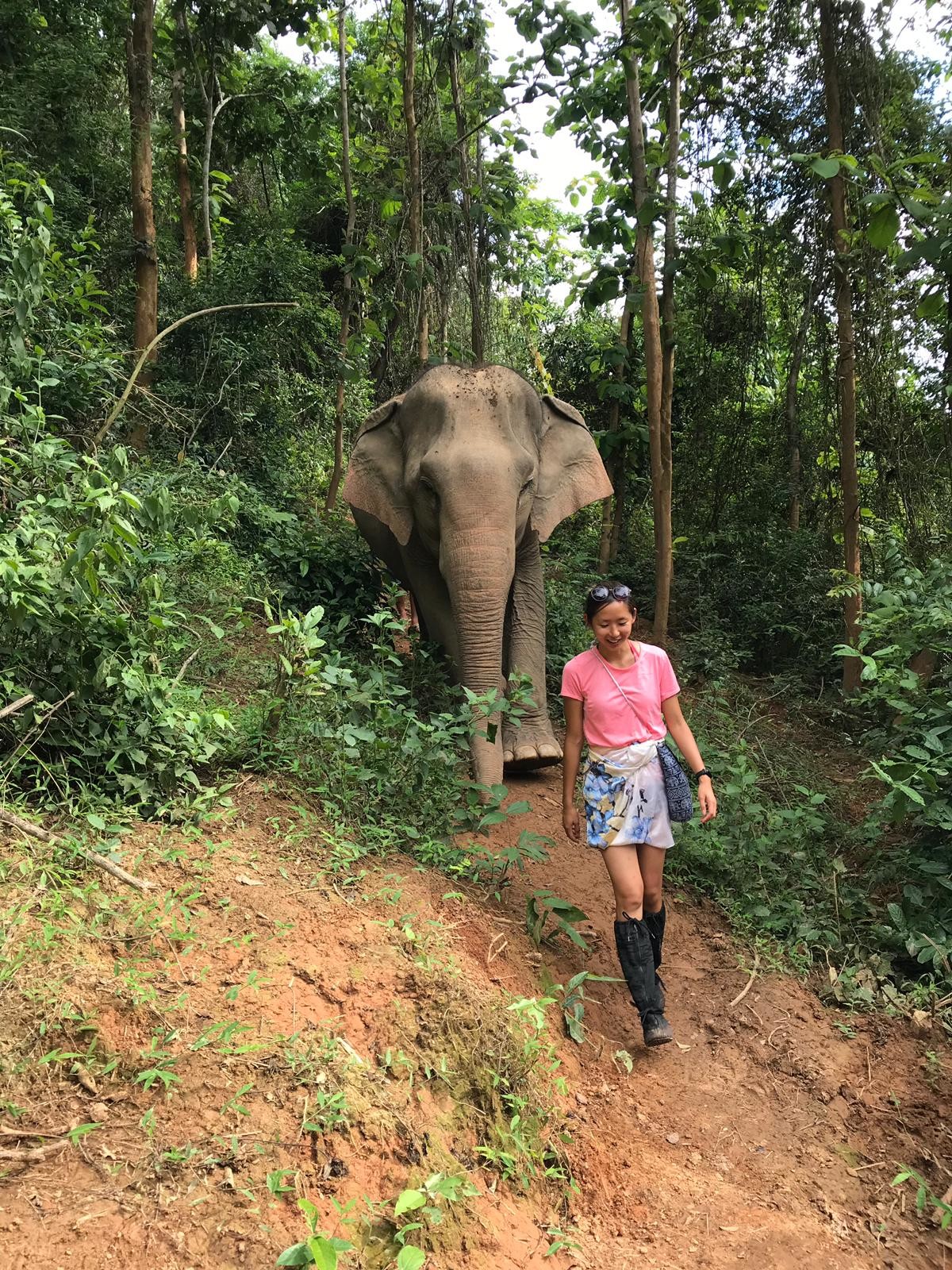
The future here though was uncertain, the huge Chinese railway development I spoke about in the last blog was coming through here too. The lands these ten rescued elephants browsed on, were shared community lands, but the Chinese Yuan was performing magic tricks here too. Land was being snapped up and already three large hotel resorts had been planned and sited in the immediate region of Manda Lao.
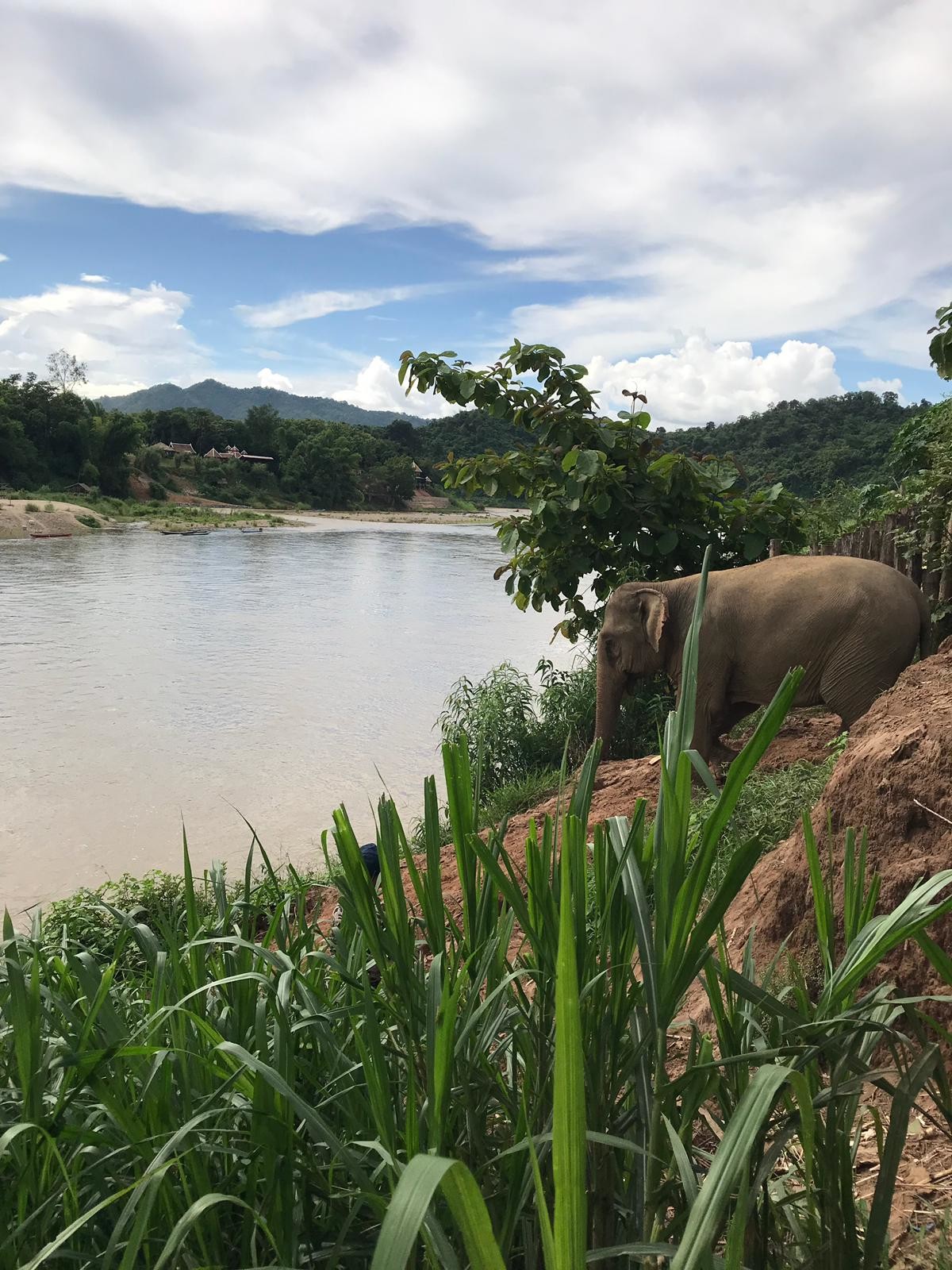
Perhaps it was an unsure future, but at least for now, these elephants seemed happy and were certainly healthy.
Summer reading for ERASMUS students:
- The Asian Elephant: Mark Shand. Travels on my Elephant and Queen of the Elephants.
- The African Elephant: Lawrence Anthony. The Elephant Whisperer.
- The Zoo Elephant: Modoc.
- Zoo News Digest is a great site to follow as it often highlights non sustainable animal performance practices world wide as well as identifying the ripple effects of animal selfies.
Photo gallery
Want to have your own Erasmus blog?
If you are experiencing living abroad, you're an avid traveller or want to promote the city where you live... create your own blog and share your adventures!
I want to create my Erasmus blog! →






















Comments (0 comments)